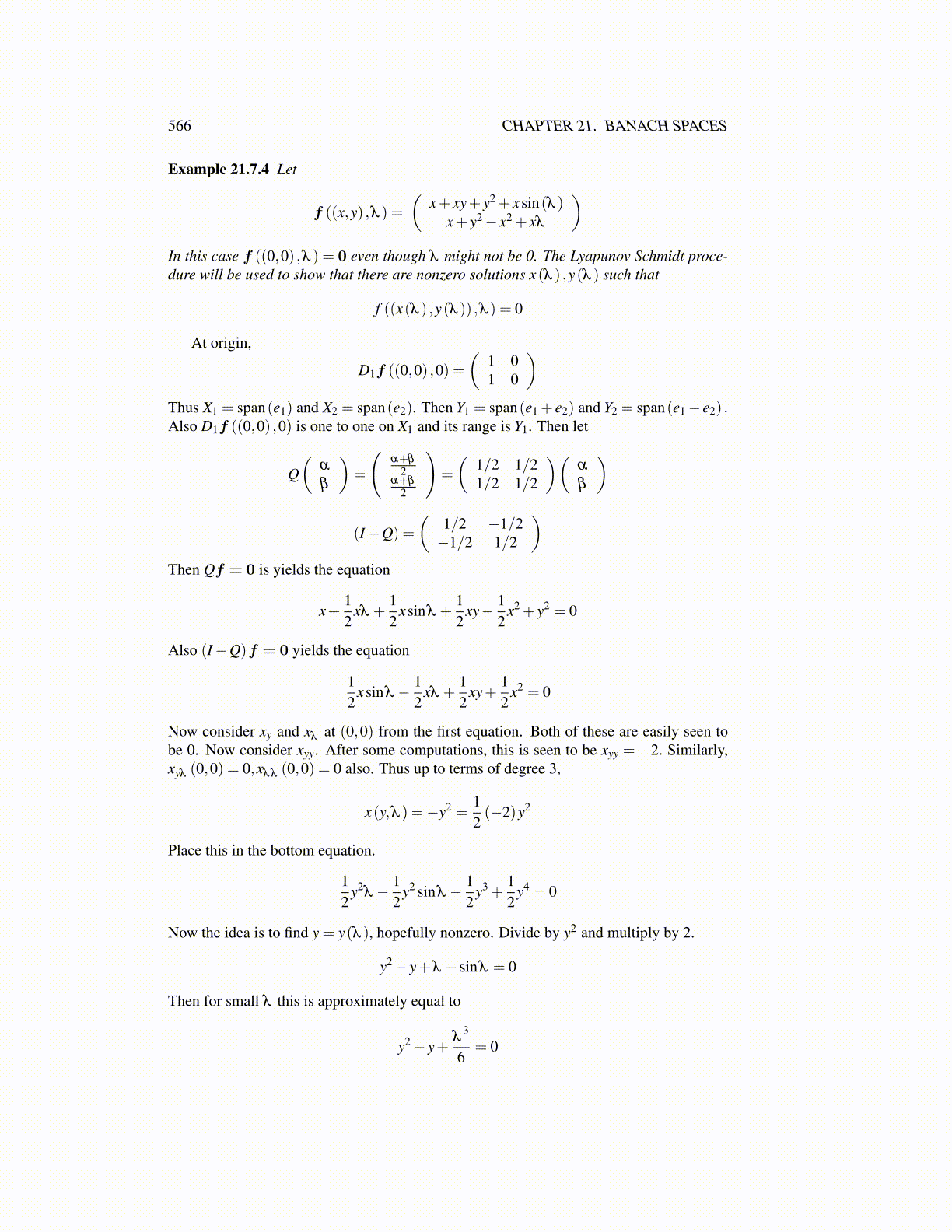
566 CHAPTER 21. BANACH SPACES
Example 21.7.4 Let
f ((x,y) ,λ ) =(
x+ xy+ y2 + xsin(λ )x+ y2− x2 + xλ
)In this case f ((0,0) ,λ ) = 0 even though λ might not be 0. The Lyapunov Schmidt proce-dure will be used to show that there are nonzero solutions x(λ ) ,y(λ ) such that
f ((x(λ ) ,y(λ )) ,λ ) = 0
At origin,
D1f ((0,0) ,0) =(
1 01 0
)Thus X1 = span(e1) and X2 = span(e2). Then Y1 = span(e1 + e2) and Y2 = span(e1− e2) .Also D1f ((0,0) ,0) is one to one on X1 and its range is Y1. Then let
Q(
α
β
)=
(α+β
2α+β
2
)=
(1/2 1/21/2 1/2
)(α
β
)
(I−Q) =
(1/2 −1/2−1/2 1/2
)Then Qf = 0 is yields the equation
x+12
xλ +12
xsinλ +12
xy− 12
x2 + y2 = 0
Also (I−Q)f = 0 yields the equation
12
xsinλ − 12
xλ +12
xy+12
x2 = 0
Now consider xy and xλ at (0,0) from the first equation. Both of these are easily seen tobe 0. Now consider xyy. After some computations, this is seen to be xyy = −2. Similarly,xyλ (0,0) = 0,xλλ (0,0) = 0 also. Thus up to terms of degree 3,
x(y,λ ) =−y2 =12(−2)y2
Place this in the bottom equation.
12
y2λ − 1
2y2 sinλ − 1
2y3 +
12
y4 = 0
Now the idea is to find y = y(λ ), hopefully nonzero. Divide by y2 and multiply by 2.
y2− y+λ − sinλ = 0
Then for small λ this is approximately equal to
y2− y+λ
3
6= 0